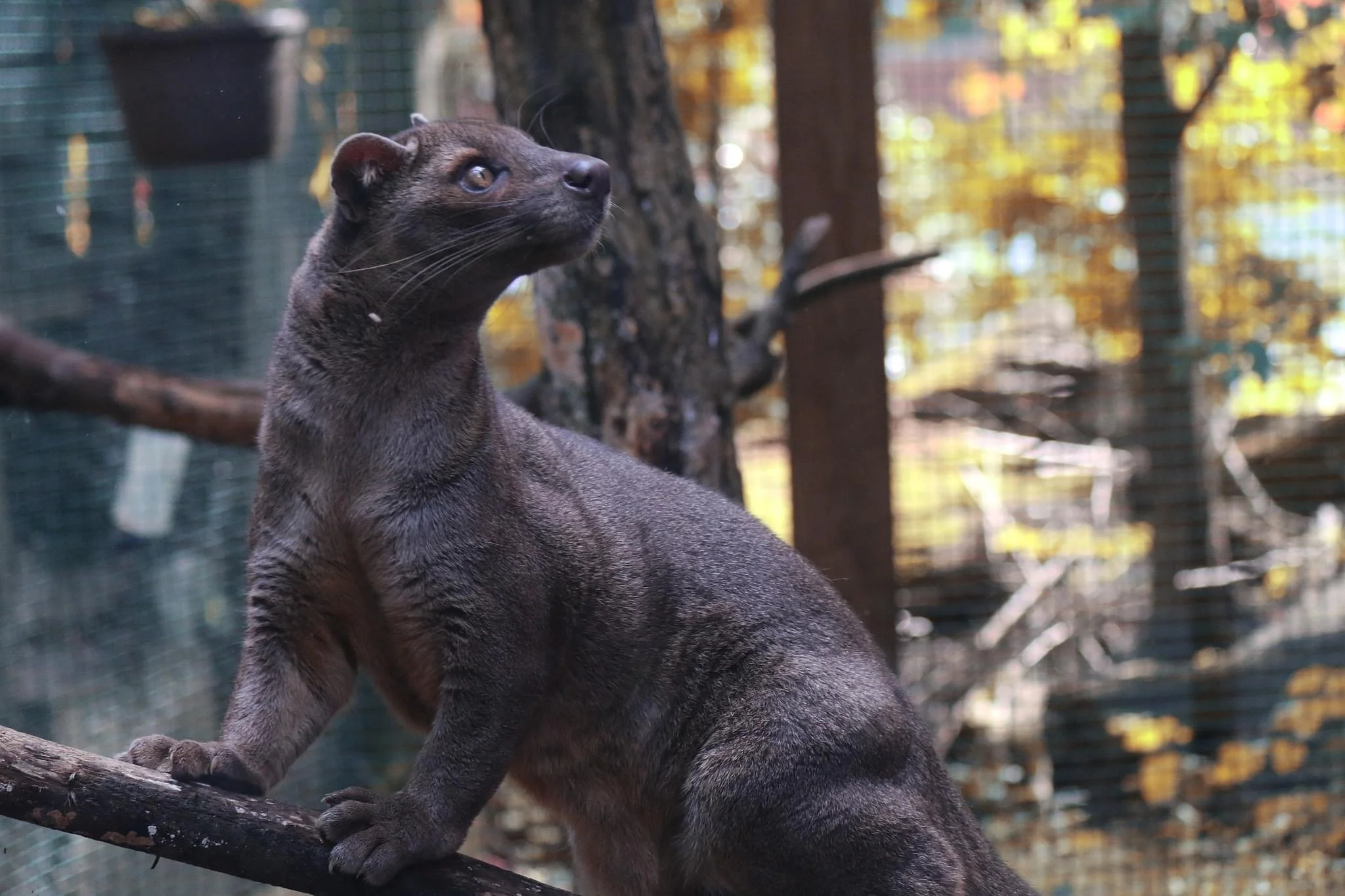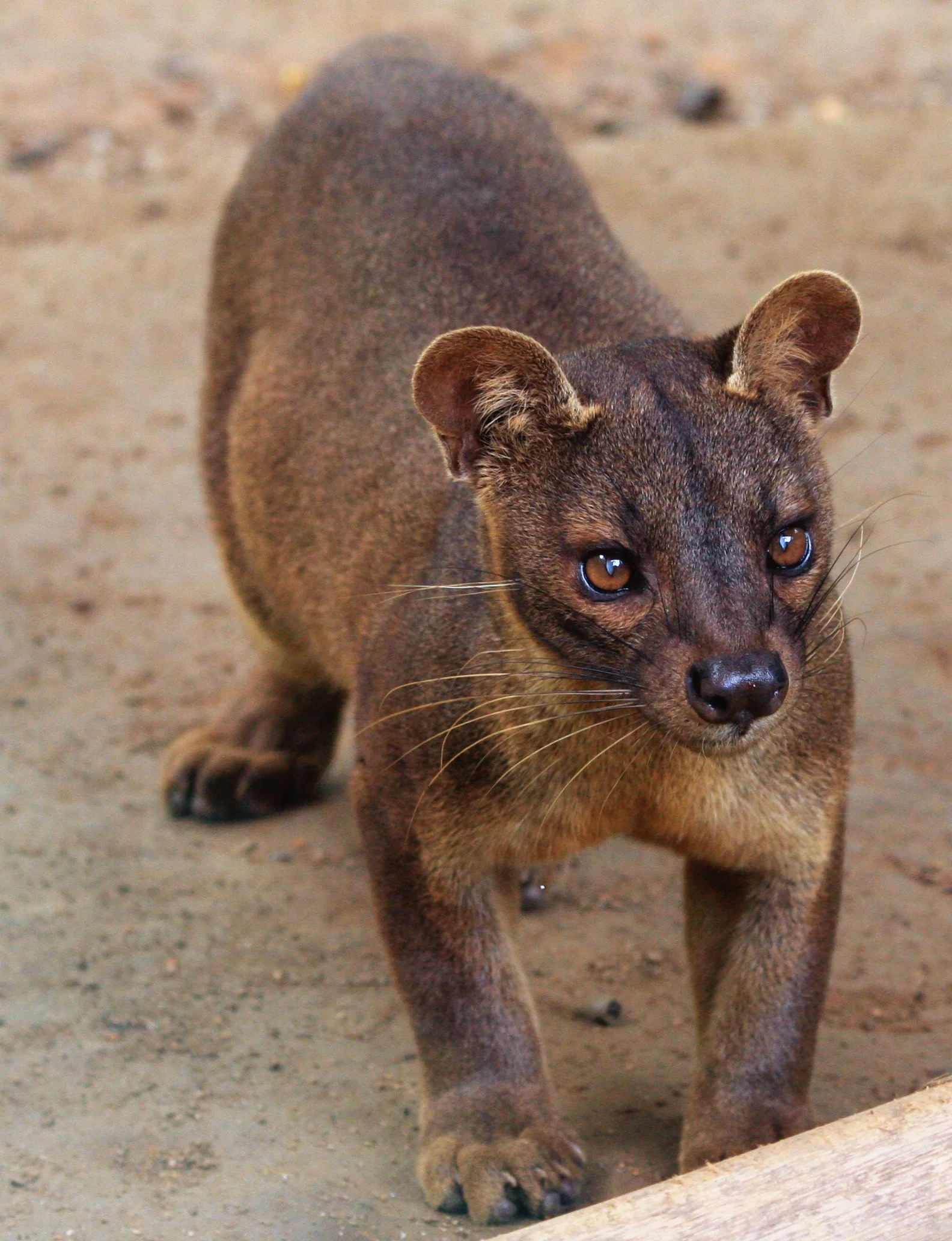Remarkable Creature: The Fossa
The following post is an excerpt from the weekly newsletter - the December 3, 2023 edition.
This week I am featuring the fossa, Madagascar’s largest carnivore (Cryptoprocta Ferox). It is a little known animal, and I was inspired to feature it this week as it is the name of our current cohort of about 165 students enrolled in the Terra.do Learning for Action program on Climate Change fundamentals (Terra.do names each cohort after a vulnerable or endangered animal).
Introduction
With its sleek body, cat-like appearance, and a blend of traits reminiscent of both felines and canines, the fossa holds a special place in Madagascar's wildlife. Despite its feline appearance, the fossa is a member of the Eupleridae family, closely related to mongooses.
This creature represents an emblem of Madagascar's ecological significance and the importance of preserving its fragile ecosystems: there are only about 2,500 left in the wild, and are classified as vulnerable species.
Geographically isolated for millions of years, Madagascar has fostered the evolution of numerous endemic species, including the fossa. This animal exudes agility and stealth, making it an efficient hunter in the dense rainforests and diverse landscapes of its native habitat.
Their agile physique allows them to navigate the treetops with ease, combining arboreal prowess with ground-level hunting abilities.
Primarily a carnivorous species, the fossa has a varied diet, preying on an assortment of animals, including lemurs, reptiles, birds, and smaller mammals. Its adaptability and resourcefulness in hunting have enabled the fossa to thrive as a top predator in Madagascar's intricate food web.
Main Features
Despite being a key player in the island's ecosystem, the fossa faces several threats. Habitat loss due to deforestation, driven by agricultural expansion and human settlements, remains a menace to the fossa's survival.
As forests diminish, the fossa's territory shrinks, leading to increased competition for resources and potential conflict with human communities.
Moreover, the fossa encounters challenges from hunting and human-wildlife conflict, where they are sometimes considered a threat to poultry and small livestock, leading to retaliatory killings. These factors, compounded by limited understanding and conservation efforts compared to other, more charismatic species, put the fossa at risk of population decline.
Efforts toward conserving the fossa have gained momentum in recent years. Initiatives focused on habitat protection, community engagement, and raising awareness about the fossa's ecological significance have been pivotal in fostering coexistence between humans and wildlife.
Conclusion
Encouraging ecotourism practices that prioritize responsible viewing of fossas in their natural habitat has also emerged as a means to generate income for local communities while promoting conservation efforts.
The fossa is a remarkable example of Madagascar's biodiversity and reminder of the importance of preserving its delicate ecosystems. By addressing the threats faced by this little known animal and more generally fostering harmonious coexistence between humans and wildlife, we can plan for the continued survival of the fossa and the perpetuation of Madagascar's ecological heritage.
Sources:
“All Creatures” Podcast - Episode 350: Fossa Conservation with Brittany Behler


